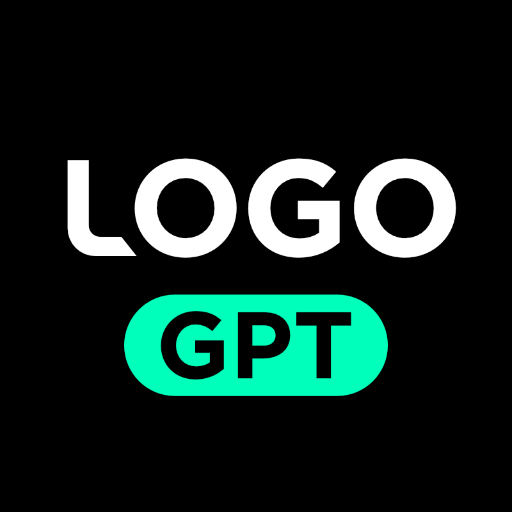Trademarks GPT-U.S. trademark process guide
AI-powered assistance for trademark applications
What is a trademark and why should I care?
How do I get my company's name registered as a trademark?
How long does it take to get a trademark?
Can I trademark my company's name if my boat building company's name is "Boat Builders"?
Related Tools
Load MoreBranding GPT™
Use me for all things branding: From brand naming, to brand strategy, personality, tone of voice, tagline creation and beyond.

Logo GPT
This GPT excels at logo design assistance. Tell me what you want the logo for!

Branding GPT®
High level branding assistant

GPT Store
I suggest GPTs based on your needs.

GPT Genius
Your guide to custom GPTs.

Browse GPT
An AI-Powered Search Engine for Latest & Greatest Custom GPTs on OpenAI.
20.0 / 5 (200 votes)
Overview of Trademarks GPT
Trademarks GPT is an interactive AI-based assistant specifically designed to provide guidance on U.S. trademark processes. Its primary function is to help users navigate through trademark filing, examination, and maintenance by offering clear, concise information sourced from the USPTO (United States Patent and Trademark Office). The tool focuses on general insights and best practices, such as searching existing marks, understanding the application process, and preparing for post-registration requirements. It's not a substitute for legal advice, but rather a helpful resource to educate users on trademark-related topics and facilitate their trademark journey. For example, if someone is unsure whether their brand name is registrable, Trademarks GPT can explain the criteria for registrability and suggest resources for conducting a preliminary search of existing trademarks.

Key Functions of Trademarks GPT
Trademark Application Guidance
Example
A user wants to apply for a trademark but is unsure about the correct application type—whether they should file for a 'use in commerce' application or an 'intent-to-use' application.
Scenario
Trademarks GPT would guide the user by explaining the differences between the two, helping them determine which application suits their situation, and directing them to the USPTO's resources for further steps.
Trademark Search Assistance
Example
A small business owner wants to check if their new logo is available for trademark registration.
Scenario
Trademarks GPT explains how to use the USPTO's TESS (Trademark Electronic Search System), describes how to search for similar marks, and highlights the importance of avoiding confusion with existing trademarks.
Trademark Maintenance and Renewal
Example
A user who already owns a registered trademark is unsure when they need to file their renewal documents.
Scenario
Trademarks GPT helps by explaining the timeline for renewals, including Section 8 and Section 9 filings, and directs the user to the appropriate forms and instructions on the USPTO website.
Target Audience for Trademarks GPT
Small Business Owners and Entrepreneurs
Small business owners, startups, and individual entrepreneurs who are new to trademarks benefit significantly from Trademarks GPT. They often seek guidance on how to protect their brand names, logos, or slogans, and Trademarks GPT helps simplify the process by breaking down complex legal terminology and offering practical steps for trademark registration.
Legal Professionals and Paralegals
Although not a replacement for professional legal advice, Trademarks GPT can serve as a preliminary research tool for paralegals, junior attorneys, or legal interns. It can quickly provide overviews of trademark rules, suggest filing strategies, and direct users to specific sections of the Trademark Manual of Examining Procedure (TMEP) for detailed information.

Guidelines for Using Trademarks GPT
Visit aichatonline.org for a free trial without login, no need for ChatGPT Plus.
This step enables access to the Trademarks GPT tool immediately, simplifying the process without additional sign-ups.
Prepare trademark-related queries.
Trademarks GPT is designed to handle U.S. trademark processes. Gather questions about applications, procedures, refusals, etc., to ensure precise guidance.
Consult the USPTO for validation.
Trademarks GPT provides general advice; however, always verify information with the USPTO for official guidance.
Explore relevant USPTO resources.
Utilize the links and resources aggregated by Trademarks GPT to save time when navigating the USPTO website.
Optimize queries by providing details.
To get the best response, include specifics like your industry, type of trademark (word, logo), and issues like refusals.
Try other advanced and practical GPTs
UEFN
AI-powered game content creation

Factiverse AI Fact-check
AI-powered fact-checking for accuracy

Trend Tracker Pro+
AI-Powered Insights for Smarter Decisions
Product Promoter
AI-powered tool for effortless content creation.
Apple Podcast Pro
AI-powered podcast summaries and insights

Iusreporter Assistente legale
AI-powered legal assistance for professionals.

Metaverse Radio GPT
Your AI DJ for the Metaverse

Visa Guy
Visa, Simplified.

Webflow GPT
AI-Powered Webflow Assistance

ThumbnailGPT
AI-Powered Thumbnails for Video Success

BibleGPT
AI-Powered Scripture Engagement
WeatherWhiskers
AI-powered weather imagery with a personal touch.

- Legal Compliance
- Trademark Search
- Application Filing
- Registration Process
- Trademark Maintenance
FAQs About Trademarks GPT
What can Trademarks GPT help me with?
Trademarks GPT assists with understanding U.S. trademark processes such as application steps, refusals, letters of protest, and maintenance. It provides guidance on trademark documentation, search strategies, and USPTO resources.
Is Trademarks GPT a legal advisor?
No, Trademarks GPT is not a legal advisor. It offers general insights and directs users to consult with the USPTO or a qualified attorney for complex cases or legal advice.
Can I use Trademarks GPT for international trademarks?
Trademarks GPT focuses on U.S. trademarks. For international trademark issues, you'll need to consult other resources or legal professionals.
How do I submit a trademark application?
Trademarks GPT will guide you through the steps, from searching for similar marks to filling out the application form. It directs you to the appropriate USPTO tools, but you must submit the application via the USPTO website.
How does Trademarks GPT enhance my trademark strategy?
It provides suggestions on strengthening your trademark, avoiding common pitfalls, and understanding key terms such as deceptiveness, likelihood of confusion, and descriptiveness.